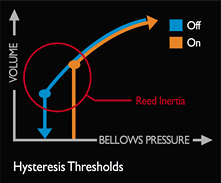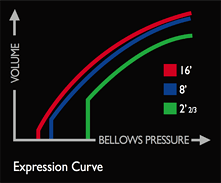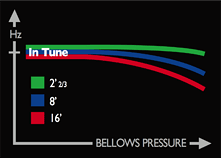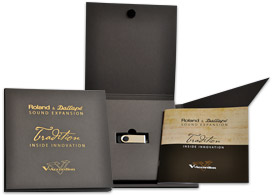Roland's musical instruments can be seen stirring up excitement no
matter what music is played - whether it be jazz, rock, dance, whatever.
Their reliable performance and leading-edge sounds are appreciated by
pros and aspiring new talent alike.
History
In 2004, after several years of research, a dream of Roland founder Mr. Ikutaro Kakehashi came true: the V-Accordion was born. This instrument was the world’s first fully digital accordion, powered by the groundbreaking new Physical Behavior Modeling technology.Bringing together the playability of a fine acoustic accordion with all the conveniences of a modern digital instrument, the V-Accordion was immediately embraced by players around the world. Today, the V-Accordion lineup has grown to include a wide range of models, from student instruments to full-featured professional accordions.
V-Accordions are manufactured in Italy by Roland Europe, in Acquaviva Picena in the Marche region. This factory is part of the Roland Corporation group, whose headquarters are located in Japan. The production of V-Accordions is a long, accurate, and precisely arranged working process resulting from a strong passion to create appealing, high-quality products.
Technology
Physical Behavior Modeling
At the heart of the V-Accordion is Roland’s proprietary Physical Behavior Modeling (PBM) digital sound engine. PBM uses complex algorithms to accurately recreate an acoustic accordion’s sound characteristics. The result is a faithful emulation of the actual physical behavior and expressive nuances of a fine acoustic instrument.Bellows Movement Modeling
PVA (Pressure Variant Amplifier)
This function controls the dynamics of each simulated reed sound as you play, based on input from the high-resolution bellows pressure sensor. Starting and stopping, hysteresis threshold, inertia, expression curve, and volume are all individually programmed to reproduce a true free-reed sound.

PVF (Pressure Variant Filter)
The tone color of each reed sound is also shaped in real time by a dedicated digital signal processor (DSP), which accurately responds to each expressive playing nuance applied by the bellows.
PVP (Pressure Variant Pitch)
The pitch of each simulated reed is varied individually. As the bellows is pushed or pulled more forcefully, the sound becomes fatter and richer. This accurately replicates the response of individual reeds in an acoustic accordion, which exhibit a natural tendency to go out of tune when more bellows pressure is applied.Musette Tuning
Based on extensive research of the different tuning types used throughout the world, the V-Accordion’s note-by-note micro-tuning feature allows a V-Accordion to authentically reproduce many different accordion types for various genres of music.Piano-Type
The Roland V-Accordion series of piano-type instruments
comprises three models and three color variations: the FR-7x (black,
red, or white); FR-3x (black or white); and FR-1x (black or red). The
white versions of the FR-7x and FR-3x also feature decorated handmade
bellows and attractive accessories made from real leather and
Alcantara®.
Alcantara® is a registered trademark of Alcantara SpA, Italy.
Compact and flexible, the FR-1x is ideal for young students and stage performers. Equipped with the latest V-Accordion technology, the FR-1x sets a new standard in learning and live performance with its excellent sound quality, small size, and attractive price.
The V-Accordion offers selectable Bass & Chord modes (seven modes: two Bass Rows, three Bass Rows A7th, three Bass Rows A5dim, three Bass Rows B7th, three Bass Rows B5dim, three Bs Rows Bx 7th, three Bass Rows Belgium) and Free Bass modes (five modes: Minor 3rd, Bajan, Fifth, N.Europe, Finnish).
Button-Type
The Roland V-Accordion series of button-type instruments
comprises three models and three color variations: the FR-7xb (black,
red, or white); FR-3xb (black or white); and FR-1xb (black or red). The
white versions of the FR-7xb and FR-3xb also feature decorated handmade
bellows and attractive accessories made from real leather and
Alcantara®.
Alcantara® is a registered trademark of Alcantara SpA, Italy.
Compact and flexible, the FR-1xb is ideal for young students and stage performers. Equipped with the latest V-Accordion technology, the FR-1xb sets a new standard in learning and live performance with its excellent sound quality, small size, and attractive price.
The treble-button modes (C-Griff Europe, C-Griff 2, B-Griff Bajan, B-Griff Fin, D-Griff1, D-Griff 2) allow players to use the system they’ve grown accustomed to; the button keyboard layouts of acoustic accordions are as diverse as the sounds themselves. The V-Accordion offers selectable Bass & Chord modes (seven modes: two Bass Rows, three Bass Rows A7th, three Bass Rows A5dim, three Bass Rows B7th, three Bass Rows B5dim, three Bass Rows Belgium) and Free Bass modes (five modes: Minor 3rd, Bajan, Fifth, N.Europe, Finnish).
Diatonic
Roland is pleased to introduce another milestone in digital musical instrument history—the FR-18 diatonic V-Accordion. Equipped with the renowned V-Accordion sound engine and dedicated new samples, the FR-18 diatonic is a dream come true for folk accordionists seeking a world-class diatonic instrument that can do it all.Traditional diatonic acoustic accordions have only one tonal key, but the FR-18 diatonic has no such limitation—with its all-digital sound engine, you can change the instrument’s key instantly, with the simple press of a button. The FR-18 diatonic also features a brand new sound set that lets you choose from a lineup of 12 virtual diatonic accordions, as well as a variety of orchestral instruments, Virtual Tone Wheel organs, percussion, and more.
Available in black and red, the FR-18 diatonic fits into a variety of playing environments, preserving elegance and respecting tradition. Since it has no internal speakers, the instrument is extraordinarily light and comfortable to play. With its long battery life, the FR-18 diatonic can be used in all types of situations both indoors and out, and you can pair it with a portable, battery-powered amplifier for the ultimate mobility.
Quality earphones are included with the FR-18 diatonic, so you can enjoy the instrument immediately after opening the box. As a silent accordion, the FR-18 diatonic is perfect for practicing any time, even late in the evening and in small apartments.
Sound Expansion
Roland & Dallapé — Tradition Inside Innovation

VA-SE02 (FR-7x & FR-3x)
In September 2010, Roland and Dallapé joined forces to give birth to a project that is bound to become another landmark in music history. Dallapé’s historical models such as the 1871, Liturgica, and many others displayed at the Accordion Museum in Stradella can now be played again by all accordionists and lovers of such epoch-making instruments.How is this possible? Roland has released a USB memory package containing the sounds of these historical acoustic accordions, which were obtained by means of a sophisticated and refined sampling process.
The Dallapé Sound Library is now available as a sound expansion package, which can be easily used in the Roland FR-7x and FR-3x V-Accordion models.
Alpine Sound Expansion

VA-SE01 (FR-7x, FR-3x & FR-18d)
The Alpine expansion for the FR-7x, FR-3x, and FR-18 diatonic V-Accordions contains the sounds of German folk acoustic accordions and typical Oberkrainer orchestral instruments.These sounds are dedicated to Oberkrainer music, the traditional music genre of Slovenia, Austria, and Germany.
This sound expansion contains special samples of characteristic instruments for this kind of music, like baritone horn, clarinet, guitar, trumpet, and bass tuba. Dedicated sets are also included so users can play Oberkrainer music without any pre-programming work.









3 comments:
This is a marvelous review about accordions. Now the information is settled in my mind how it has to be. Thank you! You did a great job!
Thank you! Glad you found it useful. Please stop by the blog again as we are going to be doing more complete guides of different products.
If you have any questions, please don't hesitate to call us at 905-2710303 or 1877-76(Music) 1877-766-8742 and we can certainly help you out.
Post a Comment